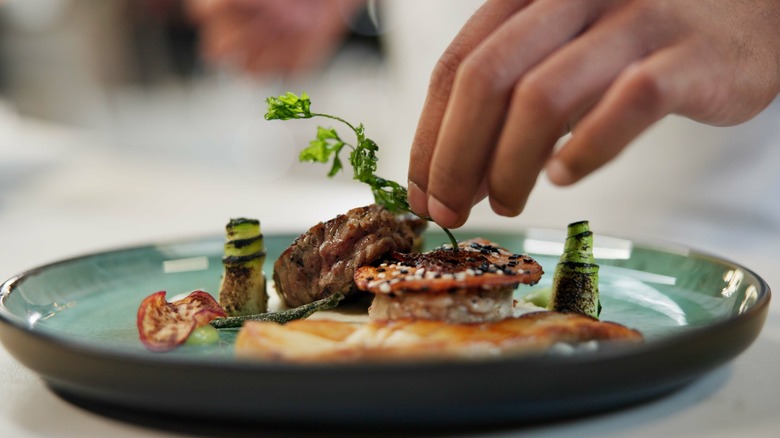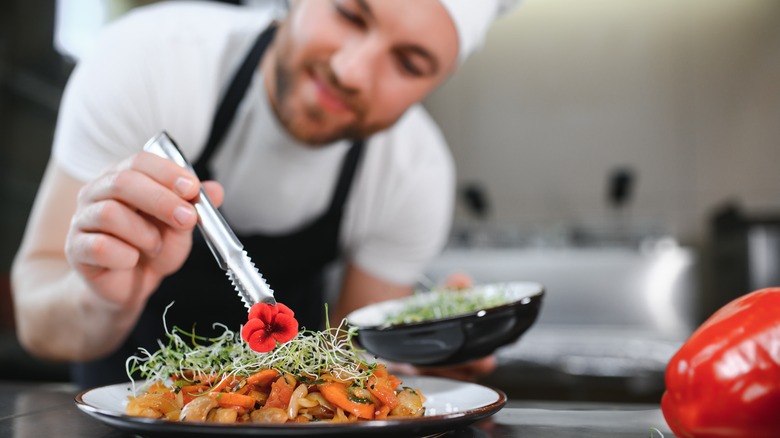The Essential Tip To Remember When Garnishing Food
No matter how well you cook a dish, sometimes it doesn't seem to look quite as good as the same food in a restaurant. While it's true that chefs have a lot more training when it comes to plating, not to mention more specialty ingredients, a lot of times a pretty plate of food comes down to a little edible embellishment known as garnish. For a few pointers on making plates look lovely, we reached out to Richard Sandoval of Richard Sandoval Hospitality. The chef, restaurateur, television personality, and cookbook author confirmed in our exclusive conversation that the most important rule is to make sure every ingredient on the plate has a job.
"Ensure the garnish is edible and has a role — it should never be there just for looks," he said. "The key to effective garnishing lies in restraint and intention. Garnishes should complement the dish's flavor profile, offering contrast or reinforcement without overshadowing the main ingredients." He suggests using herbs like cilantro and microgreens, which are mini versions of salad greens, to give the dish some added freshness and color. Crispy tortillas, candied nuts, and other textural elements can also add balance.
Use garnishes to elevate the dish
Garnishing food at home doesn't have to be complicated. Whether you're dressing up a bowl of pho or accenting a perfectly cooked steak, the key, according to Richard Sandoval, is to choose something that will elevate the plate. Vegetable crisps made with sweet potato and beets can add color and texture, like our oven roasted za'atar vegetable chips, for example, while dehydrated citrus slices or fresh fruit pearls can add acidity. He also suggests chili threads or grated aged cheese for a little sophistication, and extra virgin olive oil, chili oil, or truffle oil can instantly elevate aroma and taste.
"Finishing touches tie the dish together both visually and flavor-wise," he told Food Republic exclusively. Flavor, placement, and presentation of garnishes are also crucial. Make sure to dress microgreens with herbs or oil to enhance sheen and flavor, said Sandoval, and use squeeze bottles for sauces for precision.
If you want to get fine dining results at home, a pair of kitchen tweezers are nice to have if you're planning to work with tiny accompaniments, but if you're not fussy just make sure you're not putting something on the plate only for show — every ingredient needs to bring something to the table.


